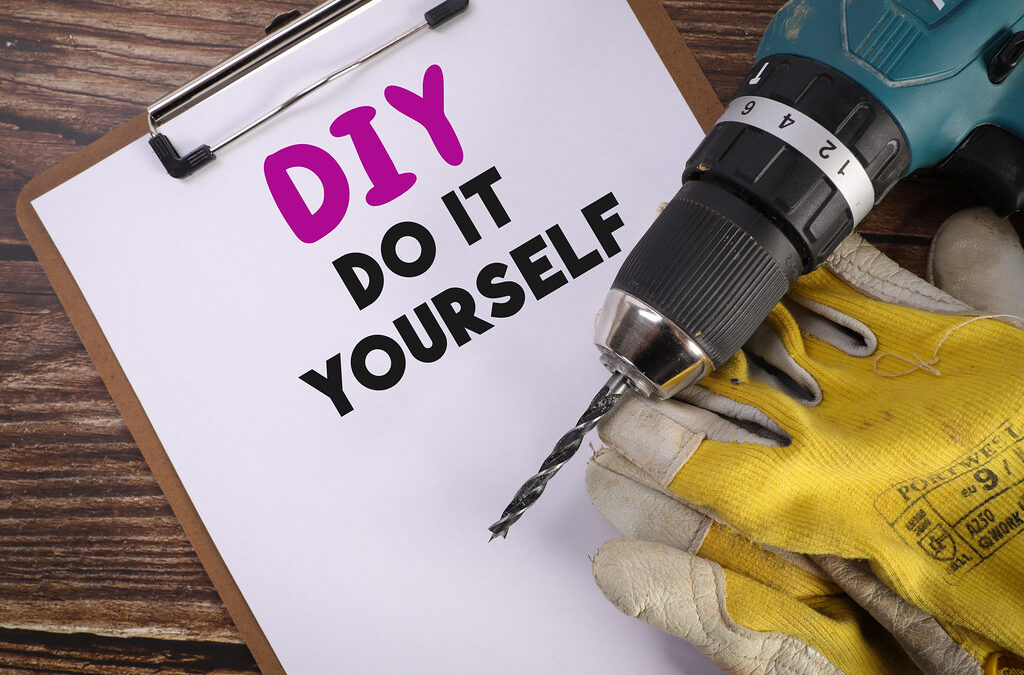As the pandemic kept people at home, in some cases for more than 18 months, many became overconfident with the “Do It Yourself” (DIY) skills. As the last year has taught us, inspectors are beginning to see red flags with some of the projects sellers have taken on.
In many cases, sellers have tried to save money or bypass long waits for licensed and qualified contractors by taking on tasks on their own. When it comes to some services, trying to save $250-$300 by not hiring a specialist can end up costing a home owner thousands.
Here are four areas to avoid DIY work:
- Electrical Work like installing a light fixture, ceiling fan or dimmer switch.
There is a massive risk of electrocution with this project. Some have forgotten to turn off the breaker to the electrical circuit for the light and have ended up injured.
In addition, overloaded circuit breakers, wires left exposed, or using the wrong wires are just a few of the issues inspectors are finding. Along with that, faulty wiring can cause shorts in the circuitry that can lead to house fires.
Remember, some electrical work requires a permit and failure to acquire one can result in fines from the local municipality and can hold up a home sale.
- Plumbing like changing a faucet or installing an appliance.
Water leaks can cause not only flooding in the short term but in the long term can cause issues with mold in a home. There is a saying from home flippers, “Mold is gold!” The reason is that people will sell their home to a flipper at a steep discount after finding out the home has mold. The fear is how expensive and extensive a repair may be.
Installing a dishwasher is a tedious task due to the water pressure required to operate one. An improperly installed connection, or using the wrong connection, can cause significant damage and do so quickly.
- Roofing and Decks like extending a deck or repairing roof shingles.
The biggest risk for a professional or a DIYer is falling from a roof or a high deck. Safety should always be the first concern whenever work is being completed on a home.
The biggest problem with deck installations is not being properly attached to the home. Loose or insecure handrails can also pose safety concerns. Making sure the deck is supported properly is a feat of engineering. If the home owner likes to have 25 or 30 people to the house for backyard festivities, a collapsed deck would be a quick end to the party.
Replacing shingles is also dangerous. Professional roofers know how to take precautions to stay safe on a roof while making repairs.
The reason so many homeowners choose to do deck work and roof work as a DIY project is because the labor is often more expensive than the materials. Although it can be tempting, having the knowledge of how to properly handle these repairs is a necessity when one is dealing with some of the more expensive repairs that can be made on a home.
- Landscape and grading can change the water flow around a home and cause significant damage.
Water is one of the most dangerous things when it comes to owning a home. Water damage can happen slowly over time to the point where the owner doesn’t recognize the problem until it causes major damage.
When there are puddles around the foundation of a home, that is a sign of issues. When homes are initially built, the grading must move water away from the foundation. Over time, if the area around the home is not well maintained, or if landscaping is planted and soil is moved that disturbs water flow, damage to the foundation can occur.
Long term damage can cause structural damage including issues in a crawlspace or basement. A home owner should make an effort to go outside occasionally during a rain storm and watch the water flow around the home. If standing water is seen, a professional should be called.
Making sure that a home has gutters that move water away from the foundation is also important. Properly installed downspouts and piping to let gravity take the water away is the best bet.
The worst thing you can do is put cut the downspout and direct the water to a rain barrel. Once the barrel fills, the water just spills over the side. If the home owner decides to install a rain barrel, it should be done so the barrel is away from the house to prevent any flooding.

